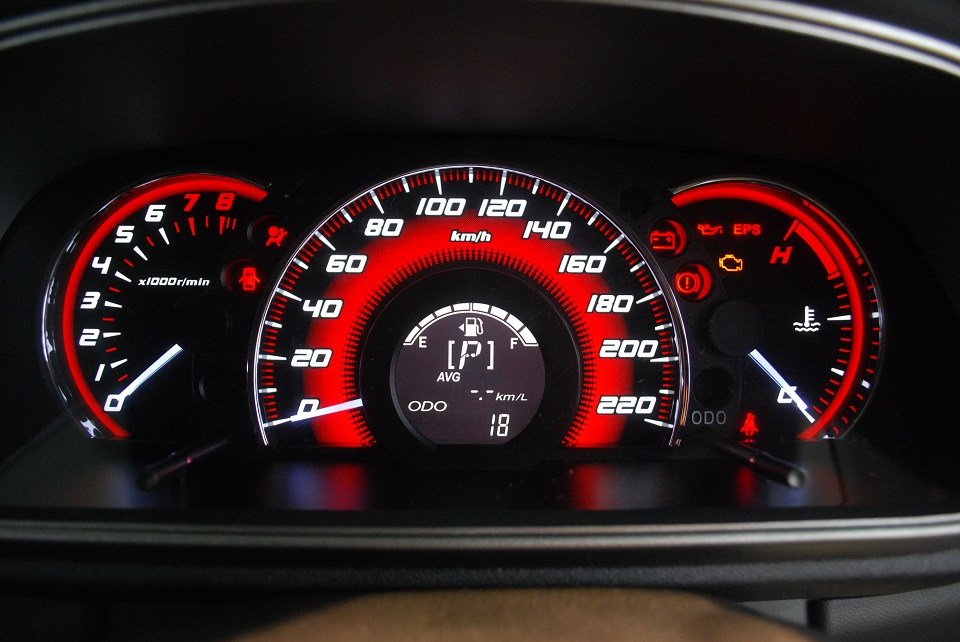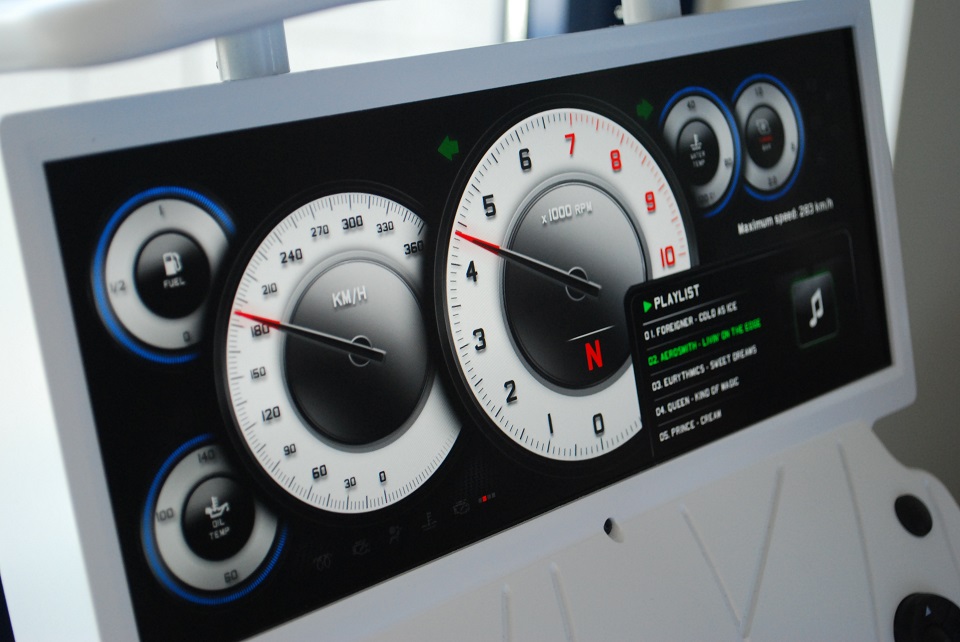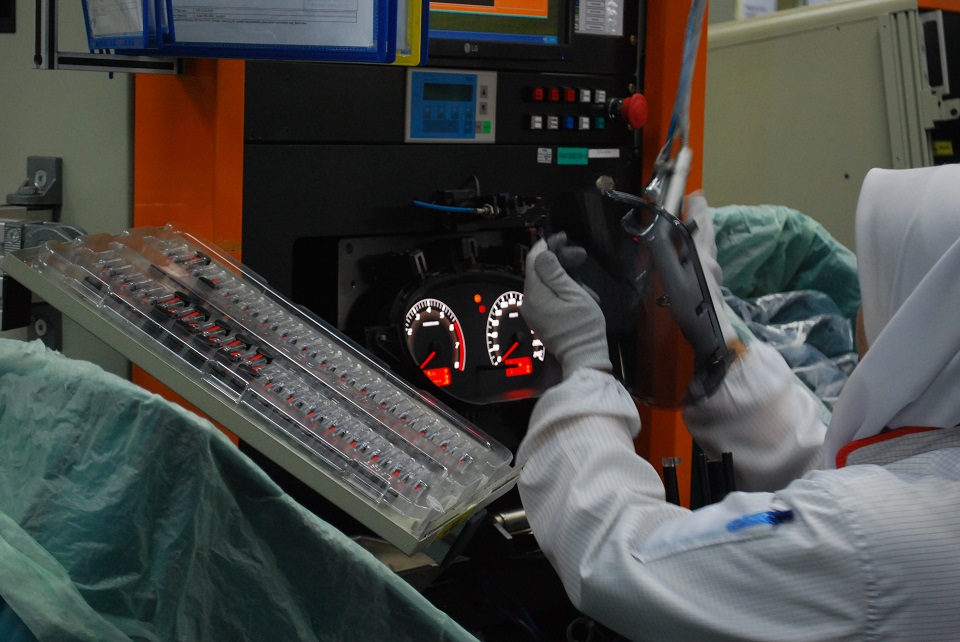Self-Illuminating Instruments – Q&A with Continental Automotive Malaysia CEO
Amid the recent controversy raised by Mr Wolf Vaupel on the ‘dangers’ of self-illuminating instrument clusters and Perodua’s defense of their position, there has never been greater interest on a feature which has been so taken for granted in recent times.
To gain a better understanding on the issue, we decided to seek expert opinion on the matter, and few in the country are as qualified as the folks at Continental Automotive Malaysia, who supply instrument clusters to not only Proton and Perodua, but quite a few other automotive plants within and beyond our shores.
Upon receiving our query, the CEO of Continental Automotive Malaysia, Mr Yen Siew San, took it upon himself to share with us a few interesting insights not just on the workings of self-illuminating instrument clusters, but also regulations that govern their design as well as future trends of instrument panels.
The exchange below was done entirely over e-mail, but Mr Yen’s reply is sufficiently concise and to the point that we saw no reason to reword his statement.
How long has Continental been making self-illuminating instrument clusters and for how many car makers?
Mr Yen: Continental Automotive Malaysia has been making these kinds of clusters for about 10 years already and it is used widely for many customers, including Perodua. But these kinds of clusters have been in the market for longer than that.
What are the benefits of self-illuminating instrument clusters?
Mr Yen: It is really a matter of design, a fashion statement favoured by the vehicle designer at that time. The major advantage is clear illumination of the cluster at all times; the brightness and outstanding LED colors are preferred by the vehicle designer. Besides being a fashion statement and preference of the designer, functionality is similar to normal clear lens cluster. Like all fashion statements, preference changes with time.
On the other hand, for this kind of clusters more lighting has to be provided to overcome the darkened face, increasing the number of LED required and the accompanying cost, as well as increasing power consumption of the cluster, and the increase of heat generated which must be dissipated efficiently.

What are the key features that make up a self-illuminating instrument cluster?
Mr Yen: The main feature is a smoky glass face in place of a clear one. Due to the dark face, it must illuminated as soon as the ignition is switched on or else one cannot read the indications given by the pointers under the dark face. The illumination must be bright so that all indicators can be read in bright sunshine as well. This bright illumination is only possible with LEDs as conventional light bulbs will generate too much heat. To power the LEDs, heat is also generated in the Printed Circuit Boards inside the cluster, and heat dissipation is important.
To prevent the driver from being distracted by bright glares, the LED’s are automatically dimmed as soon as the master lighting circuit is activated.
What are regulations and standards that govern the design of self-illuminating instrument clusters?
Mr Yen: As far as I know, there are no specific regulations and standards governing the design of self-illuminating clusters or Optitron clusters. The general regulations and standards for all clusters will apply.
I think your question relates to the lighting tell-tale that is common in some clusters. Whilst a “High Beam” lighting tell-tale is mandatory, a low-beam lighting tell-tale, or a position or side marker lamp (I’ll call this a position lamp for short) tell-tale is not mandatory, and again, subject to the designer’s preference, PROVIDED that there is an indication when the master lighting circuit is activated. For the Optitron clusters, the LED lights are automatically dimmed as soon as the master lighting circuit is activated. This serves 2 purposes:
- To reduce the light intensity and avoid glaring the driver in the dark
- To indicate that the master lighting circuit has been activated.
Please note the master lighting circuit’s activation does not necessarily mean that the low beam light is on. Dimming is also activated even when only the position lamp is turned on without turning on the low beam lights. Subsequent turning of the low beam lights will not be signaled by the cluster. (For most cars, turning the light lever, or light switch, to the first notch activates the position light and the second notch for the low beam head lamp. The High beam is activated not by turning anything, but by pulling or pushing the lever up or down.)
The high beam tell-tale (Blue in color) has always been mandatory as the high beam lights will interfere with the vision of on-coming traffic and must be turn-off if faced with on-coming traffic.
Effective 1st January 2015, Malaysia has adopted Regulation No. 121 set by the United Nations Economic Commission for Europe (UNECE). This regulation will include the requirement for the low beam headlight tell-tale indication (which must be Green in color). This rule applies for all instrument clusters, whether Optitron or conventional type. Since no local manufactured cars are launched in 2015 yet, this regulation has not come into effect.
In a separate email exchange, Mr Yen further added the following point:
All new cars will light up their clusters as soon as ignition is turned on. Even those clear clusters without darkened faces, will also be lighted up due the current trend of tubular designs, which reduces lighting at the dials. Therefore the lighting will automatically be activated when ignition is on.
The future trends for cluster design are 100% programmable clusters, with 12.3 inch TFT – without lighting up, it is just a black box! So the driving public has to accept that lighted instruments do not mean that head lights are turned on!




























Excellent replies with clear explanations and references. Continental should be lauded for nipping this issue in the bud and answering autoworld’s query. This is the proper way to get information rather than writing emotion-charged blogs. Being a foreigner and an engineer does not make one automatically right.